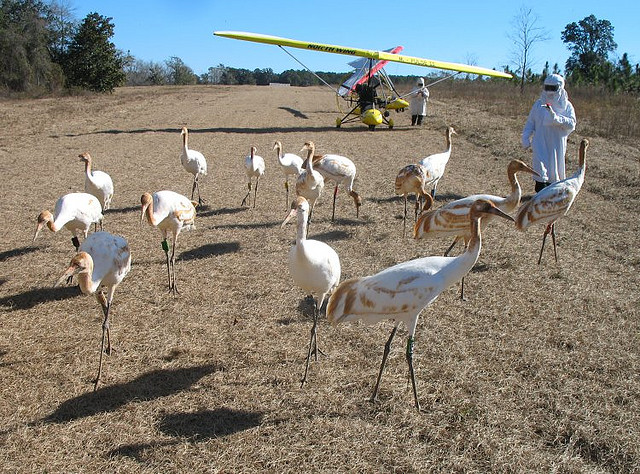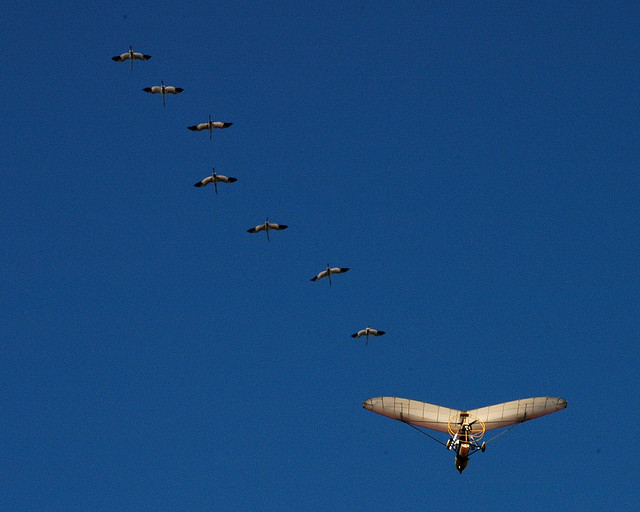FAA’s whooping waiver
On January 10, the Federal Aviation Administration (FAA) granted a waiver to a small aircraft designed to help a young flock of whooping cranes reach their wintering grounds.
Since 2001, Operation Migration has been operating a program reintroducing the endangered birds to northeastern North America, seeking to re-establish an Eastern flyway for the birds. Because the organization pays salaries to pilots, the program technically violated FAA regulations that state light sport aircraft (which can include aircraft of unique design) can only be flown for personal use. The FAA rules are intended to prevent businesses or charities from taking passengers for joyrides in planes that might be risky. Though it functions as a one-time waiver, the agency has pledged to work with Operation Migration to develop a long-term solution.
The U.S.-Canadian partnership involves the use of a small piloted aircraft, designed in appearance to function as a whooping crane mother, to guide a group of young birds reared in captivity in central Wisconsin (the pilots go as far as dressing in the same bird costumes that the handlers reared the birds in). The migration route ends at a designated wintering location in central Florida where the young birds are expected to assimilate into an existing population. The effort harkens to a similar tactic that served as the plot line for the 1990s film, “Fly Away Home,” which is based on the experiences of Canadian inventor Bill Lishman, a co-founder of Operation Migration.
birds are expected to assimilate into an existing population. The effort harkens to a similar tactic that served as the plot line for the 1990s film, “Fly Away Home,” which is based on the experiences of Canadian inventor Bill Lishman, a co-founder of Operation Migration.
According to Operation Migration, the whooping crane once number around 1,400 birds in 1860. Due to hunting and habitat loss, their numbers declined to a mere 15 birds in 1941. The Fish and Wildlife Service reports that the birds now number 383 in the wild with a total wild and captive population of 535.
More information on Operation Migration can be found here. Additional information of federal whooping crane recovery efforts can be found here or by visiting the page of the Whooping Crane Eastern Partnership.
Photo credit: Claire_Timm, Operation Migration
